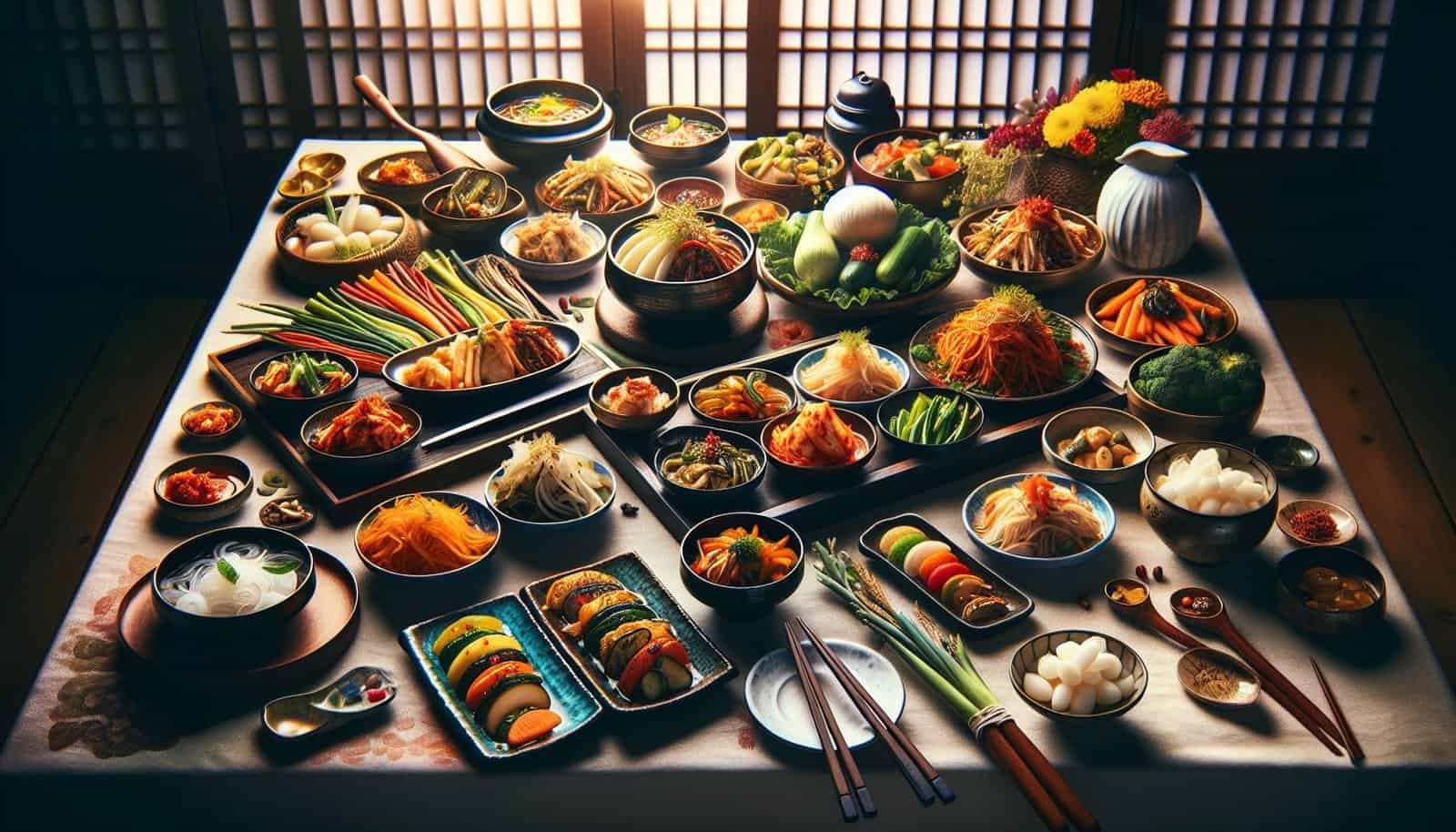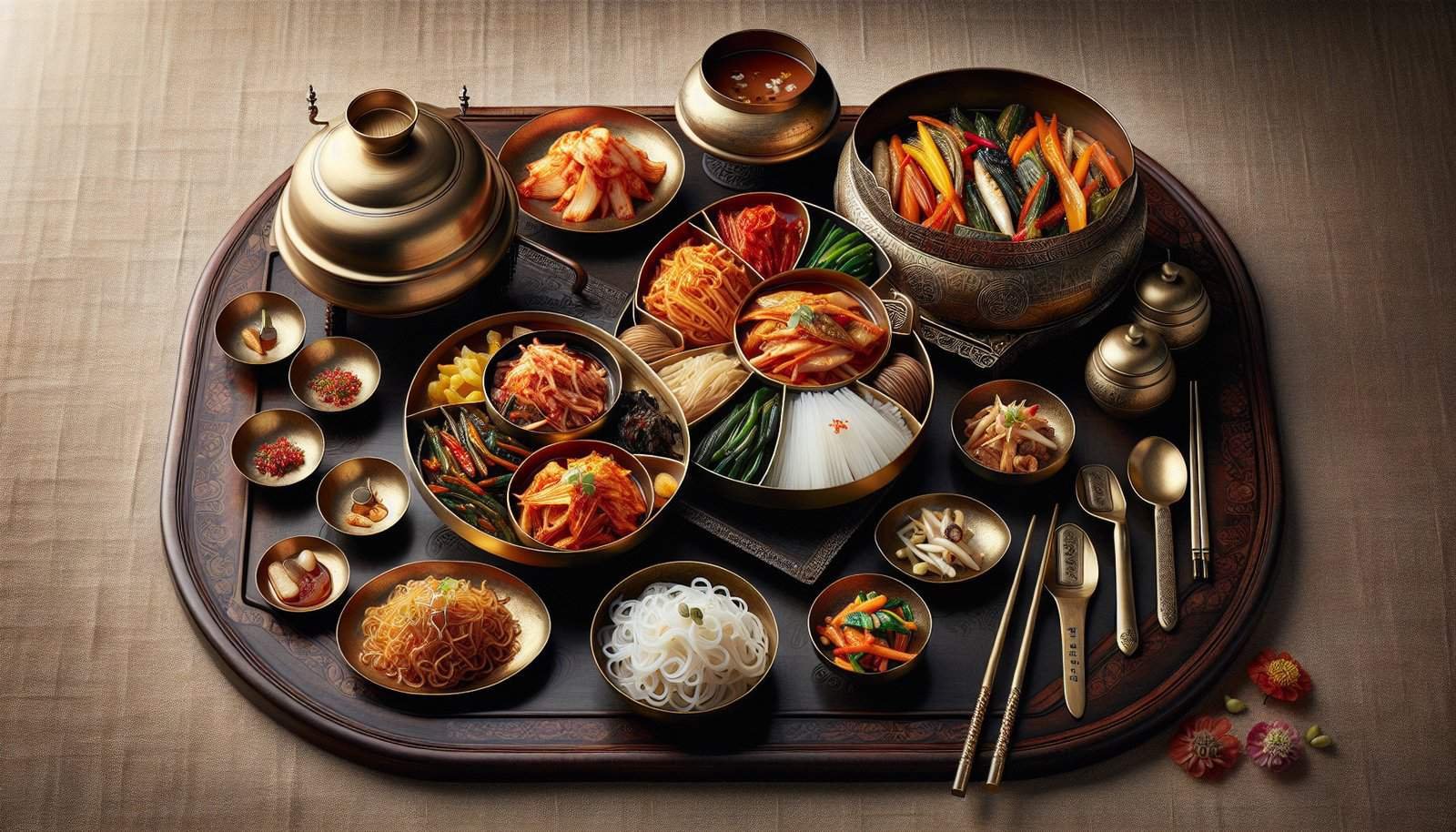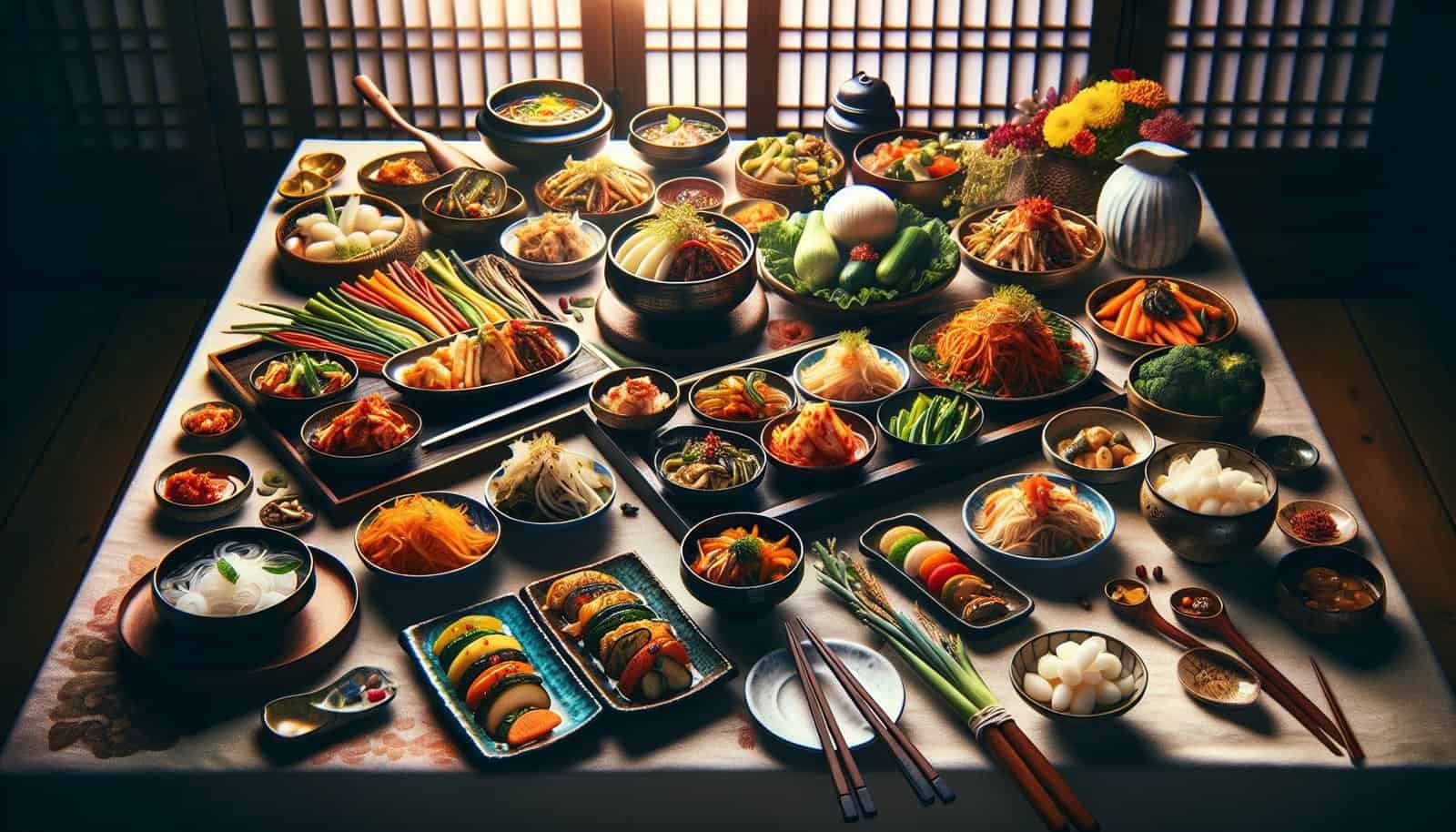Have you ever wondered how traditional Korean meals are influenced by the changing seasons? Well, prepare to be tantalized by the delicious flavors and vibrant colors that accompany each season in Korea. From the hearty and warming dishes of winter to the light and refreshing meals of summer, traditional Korean cuisine beautifully captures the essence of each season, showcasing the country’s rich culinary heritage. Dive into this article to discover the fascinating connection between Korean gastronomy and the ever-changing seasons.

Spring
Spring is a time of renewal and growth, and traditional Korean meals embrace the season by focusing on young herbs and vegetables. This is the time when fresh herbs like mint, chives, and perilla leaves are abundant and used in various dishes to add a burst of flavor and freshness. Vegetables such as spinach, baby kale, and young radishes are also celebrated during this season, as they provide a light and crisp texture to meals.
In addition to young herbs and vegetables, spring Korean cuisine also incorporates edible flowers. Beautiful and delicate flowers such as chrysanthemums, azaleas, and rose petals are used not only as a garnish but also as an ingredient in different dishes. Their vibrant colors and subtle floral flavors add a touch of elegance to the overall dining experience.
The flavors of spring Korean cuisine are light and refreshing, mirroring the rejuvenating atmosphere of the season. Dishes often incorporate ingredients like citrus fruits, green onions, and ginger, which provide a zesty and invigorating taste. These flavors help awaken the senses after the cold winter months and prepare the body for the warmer days ahead.
Summer
As the temperatures rise and the sun shines brightly, traditional Korean meals adjust their focus to embrace the abundance of refreshing and cooling ingredients. Cold noodle dishes take center stage during the summer months, offering a respite from the heat and a satisfying meal all at once. Classics like naengmyeon (cold buckwheat noodles) and bibim guksu (spicy cold noodles) are enjoyed throughout the country, providing a relief from the sweltering summer heat.
In addition to cold noodle dishes, traditional Korean meals in summer also highlight seasonal fruits. Juicy watermelons, sweet mangoes, and tangy pineapples become popular ingredients in salads, desserts, and refreshing beverages. These fruits not only provide a burst of flavor but also help to hydrate and cool down the body during the hot summer days.
To further combat the heat, traditional Korean cooking techniques incorporate cooling ingredients such as cucumber, seaweed, and mint. These ingredients have natural cooling properties and help to lower body temperature, offering a refreshing contrast to the scorching weather. Summer Korean cuisine truly embraces the season by prioritizing dishes and flavors that keep you cool and refreshed.

Autumn
As the leaves start to change colors and the air becomes crisp, traditional Korean meals adapt to include seasonal roots and gourds. Autumn is the time when hearty vegetables like pumpkins, sweet potatoes, and radishes are abundantly harvested. These ingredients are often used in savory dishes, stews, and soups, adding a depth of flavor and warmth to the meals.
One of the highlights of autumn Korean cuisine is the flavorful and hearty stews. Ingredients such as beef, pork, tofu, and various vegetables are slowly simmered together to create rich and hearty dishes. Classic stews like kimchi jjigae (kimchi stew) and doenjang jjigae (soybean paste stew) become staples during this season, offering a comforting and satisfying meal.
Preservation and fermentation also play a significant role in autumn Korean cuisine. It is the time when ingredients are harvested and preserved for the colder months ahead. Techniques like pickling, fermenting, and drying are employed to preserve vegetables, kimchi, and various sauces. These preserved ingredients not only add depth of flavor but also bring a taste of autumn to meals throughout the year.

Winter
Winter is a time when traditional Korean meals focus on warming and hearty dishes to combat the cold weather. Hearty and nourishing soups become a staple during this season, providing comfort and warmth to the body. Soups like samgyetang (ginseng chicken soup), seolleongtang (ox bone soup), and miyeokguk (seaweed soup) are enjoyed to fortify the body and boost the immune system.
In addition to soups, winter Korean cuisine places an emphasis on roasted and grilled meats. Grilling meat over an open flame not only provides heat but also creates a smoky and rich flavor. Popular winter dishes like bulgogi (marinated beef) and galbi (grilled ribs) are often enjoyed with steamed rice and side dishes, creating a satisfying and wholesome meal.
Winter Korean cuisine also focuses on fermented foods. Fermentation is a traditional preservation technique that not only extends the shelf life of ingredients but also enhances their flavors. Ingredients like soybeans, chili peppers, and cabbage are traditionally fermented to create essential condiments like soybean paste (doenjang) and chili pepper paste (gochujang). These fermented foods not only add complexity to winter dishes but also provide important probiotics and nutrients.

Year-Round Staples
Some aspects of traditional Korean meals remain consistent throughout all seasons, serving as year-round staples. One such staple is rice, which is considered the foundation of Korean cuisine. Rice is an essential part of every meal, providing sustenance and a source of energy. It is often served in a bowl alongside other dishes, acting as a base that complements and balances the flavors of the entire meal.
Another key aspect of Korean cuisine is the culture of banchan, which refers to a variety of small side dishes served alongside the main course. Banchan can include a range of dishes, such as kimchi (fermented vegetables), namul (seasoned vegetables), pickles, and jeon (pan-fried dishes). The abundance of banchan not only adds variety and color to the meal but also encourages communal dining and sharing.
Traditional Korean meals also follow the principles of balancing the five elements, as inspired by Oriental medicine. These elements include wood, fire, earth, metal, and water, and each is associated with specific taste, temperature, and health properties. Korean cuisine strives to incorporate a balance of these elements in every meal, ensuring a harmonious and holistic dining experience.
In conclusion, traditional Korean meals reflect the country’s seasons by embracing the unique ingredients, flavors, and cooking techniques that each season brings. From the emphasis on young herbs and vegetables in spring to the warming soups and grilled meats in winter, the culinary traditions of Korea truly capture the essence of each season. Whether it’s the light and refreshing flavors of summer or the hearty stews of autumn, Korean cuisine adapts and celebrates the changing seasons, creating a diverse and authentic culinary experience.

